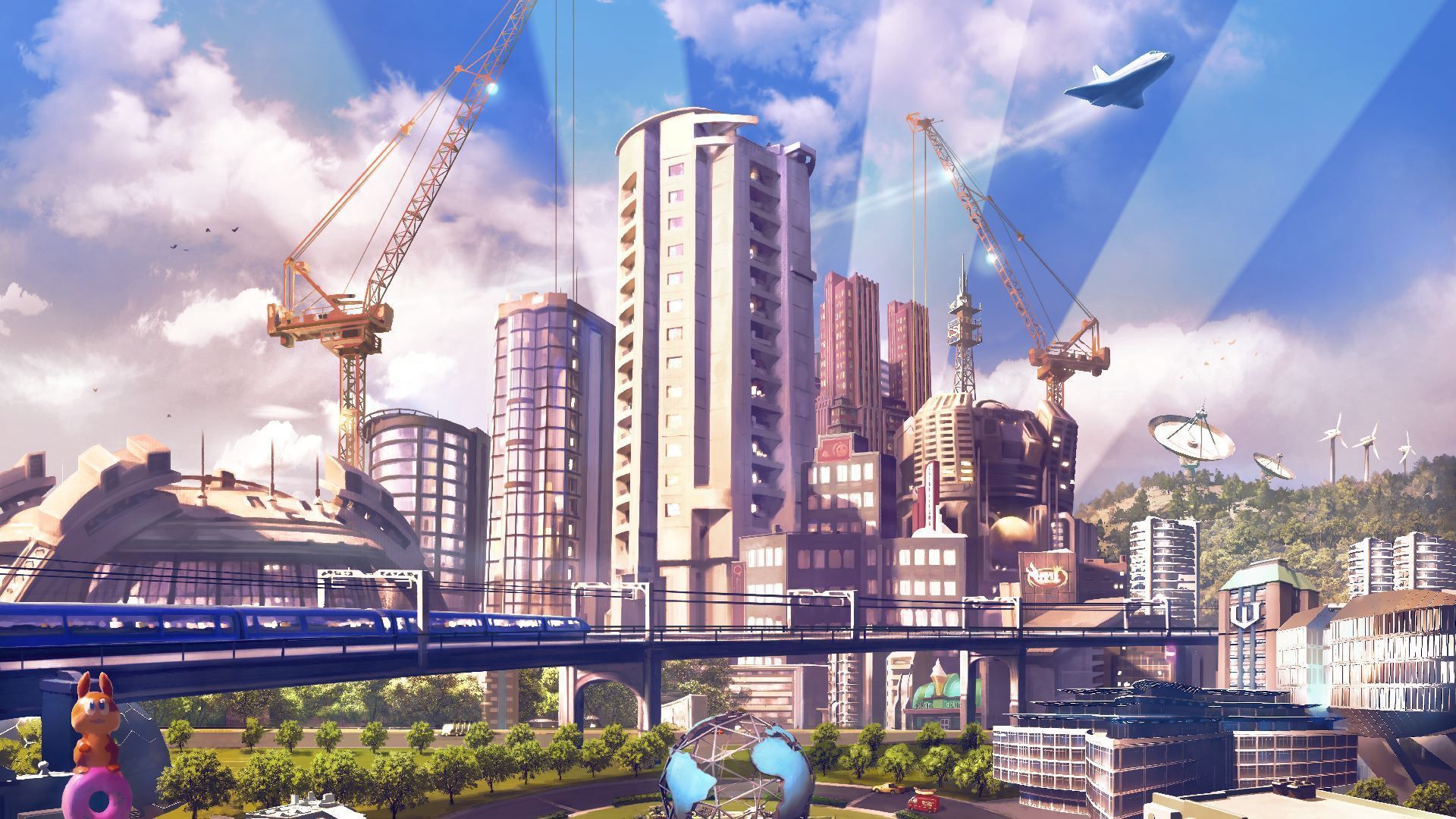Cities: Skylines is Stardew Valley for City Slickers
How a change in perspective reveals the laid-back side to city-building sims

Stardew Valley is commonly held up as one of the most relaxing and calming experiences in gaming. Yet it’s one that I and others like me find oddly stressful. The game’s loop of working towards a few long-term goals and several short-term goals leads me to obsess over the most efficient way to accomplish those goals. Even though the game at no point imposes any deadlines on the players, let alone punishes the player for taking time, every time I realise that there was a better way to make money with the resources available to me all along, I feel I lost the game. None of this is the game’s fault. It’s all me. It’s just the way some of us are wired. It’s not a good feeling, and it leads to me getting burned out on the game in a matter of a week or so whenever I try to pick it up again.

Cities: Skylines is Paradox Interactive’s city building simulator game. It’s essentially as close as possible to being a SimCity clone without risking a lawsuit, and it capitalized on SimCity (2013)’s disastrous launch and ended up becoming the superior SimCity and a runaway success. Cities: Skylines, like SimCity is a game in which the player builds a city on an undeveloped piece of land. The player controls development zones, infrastructure, utilities, services. All of these elements exist in conflict with each other in one way or another, and the subsequent balancing of these elements constitutes the gameplay. Unlike Stardew Valley, getting things wrong in Cities: Skylines has consequences. For example, if place your water pump downstream from the sewage, your citizens will drink sewage and fall sick and many of them will die. The game’s commitment to realism often means that even figuring out what’s causing an issue can be a challenge, all while things continue to get worse.
By all accounts, if a game like Stardew Valley stresses me out, Cities: Skylines should send my anxiety through the roof. And yet, I find playing Cities: Skylines to be an utterly relaxing experience. Every evening, after work, I put on a lofi mix on YouTube and play around two hours of Cities: Skylines, and think about nothing else for those two hours. It’s like meditation. So how does a seemingly ruthless city building sim seem easier to relax with than a cute farming sim?

I suspect that this is because of a number of reasons, general and personal. Like all sim games (Stardew Valley included), Cities: Skylines is addictive in a way that all good sim games are. Right off the bat, when you load up a map, you need to decide how the outside connection to the interstate highway will lead into your city, something that has a far-reaching impact. You’re hooked immediately. As your city grows and more mechanics are introduced, your time and attention will be spent addressing how your city interacts with each new mechanic, resolving issues caused by the city’s growth, and meeting the city’s demands. This is the fundamental gameplay loop. Each figurative fire put out leads to more growth which causes another figurative (or literal) fire that needs to be put out.
This loop would not be as addictive without the game’s actual gameplay. Every action that you take in Cities: Skylines impacts your city. Even a seemingly cosmetic action like planting trees or vegetation helps reduce sound pollution if placed along noise-producing uses like train tracks or busy commercial buildings. The game’s mechanics often interact with each other in ways that create problems that need to be resolved, and the game’s open-ended nature means that the player can come up with any number of creative solutions, some of which may only be possible because of the way the city has been designed so far, or because of the city’s unique topographic features.
But some of these features are common to most good sim games, including Stardew Valley. To answer the question of why I think Cities: Skylines is more relaxing than Stardew Valley, I have to venture into subjective territory. I’m using Stardew Valley as a point of comparison because while I’m definitely not the only one who doesn’t find the game relaxing, it is still popularly held up as one of the most calming and relaxing games around.
Both games have long-term goals for the player to work towards. In Stardew Valley, it’s to fix up and create a large functional farm. In Cities: Skylines, it’s to building a sprawling megapolis. These goals are reached whenever the player says they’re reached. Along the way, both games have smaller short-term goals that serve as milestones on the way to the long-term goal. These are much more concretely defined, like house upgrades in Stardew Valley and the milestones in Cities: Skylines. And in the handling of these short-term goals is where the two games differ.

Cities: Skylines for all its complex systems and interwoven mechanics has a straightforward and linear milestone system. Regardless of what your city’s main industry is or whether it consists of unchecked sprawl or dense transit-oriented blocks, milestones are unlocked when your city reaches a certain population. This gives all the actions you take in balancing the city’s needs a single point of focus: everything you’re doing, you’re doing to grow your city. In contrast, Stardew Valley’s freedom and lack of deadlines means that you decide what your short-term goals are going to be, whether it’s a financial goal, building a new structure or upgrading an existing structure, purchasing a farm animal or any other number of things. The sheer number of options can seem overwhelming, and there is generally no overwhelmingly “right” goal to choose.
This goes hand-in-hand with Stardew Valley’s other tension-inducer — the race against the clock. Constraining the in-game time of each day to fourteen hours means that invariably it will not be possible to do everything you want to in one day. So, the next day you try and find a better, faster way to do it. The most optimal route through the map, through the day, through the season, through the game. To quote Games Are the Most Stressful Way to Totally Relax:
“You turn Stardew Valley into a race against the clock in an effort to optimize every aspect. You quickly find yourself avoiding your favorite parts so you can run endlessly across town, trying to complete every possible quest, give a gift to every townsperson whose affection you’re vying for, and carve out time to scrape money out of your crops. Monday you made 200 coins, how can you double that by Friday? You realize that passing out from exhaustion is actually more efficient than taking time to walk the player character home. You sacrifice so you can do more.”
Cities: Skylines, however, has no breaks in its time. There are no days for you to maximize or optimize. There is no end-of-day screen that evaluates the day’s performance. All the metrics you use to monitor the city’s functioning –power and water usage, traffic flow, pollution, land value, are calculated in real-time for you to check on whenever you want. There is no periodical round-up of metrics. The optimization-by-repetition that happens in Stardew Valley on a daily basis happens on a much larger time-scale in Cities: Skylines, maybe with each new city that you create or each new neighbourhood you develop from scratch.
Pushing to keep improving doesn’t go against the grain in this game. Improving things like traffic flow, increase public transit usage and the efficiency of services like garbage collection with a dense population are actively encouraged and necessitated by this game. If you manage to sort out a problem like traffic congestion along a busy road, the game gives you real, visible feedback of freely flowing traffic that is immensely fulfilling to behold. In fact, beyond a point, just looking at any of my big cities fills me with the kind of pride that I was supposed to feel towards my Year 3 sprawling money-spinner of a farm in Stardew Valley.
The common response to people who complain of ‘Stardew Valley Burnout’ is to reconsider how you approach the game. Don’t think of it as something to “win”. Disregard the pressure to optimize efficiency and maximize output and focus on doing the things you like in the game.
I don’t think that it’s bad advice, and I think it makes sense as a way to approach Stardew Valley. But I also think that tamping down on that drive some of us have towards streamlining everything, and trying to find the best way to accomplish something can also be a source of stress. Games like Cities: Skylines are outlets for that drive. Not everyone is going to find Cities: Skylines calming, and even if they do, there’s going to be times when playing it won’t relax them. But if you feel like optimizing Stardew Valley isn’t doing it for you anymore, give Cities: Skylines a shot. Play a little, and when you get stuck, watch some equally laid-back videos about the game on YouTube. With each new pedestrian walkway with high traffic, city park packed with people and arterial road full of vehicles moving at fast speeds, you might just forget all your troubles for a little while.
